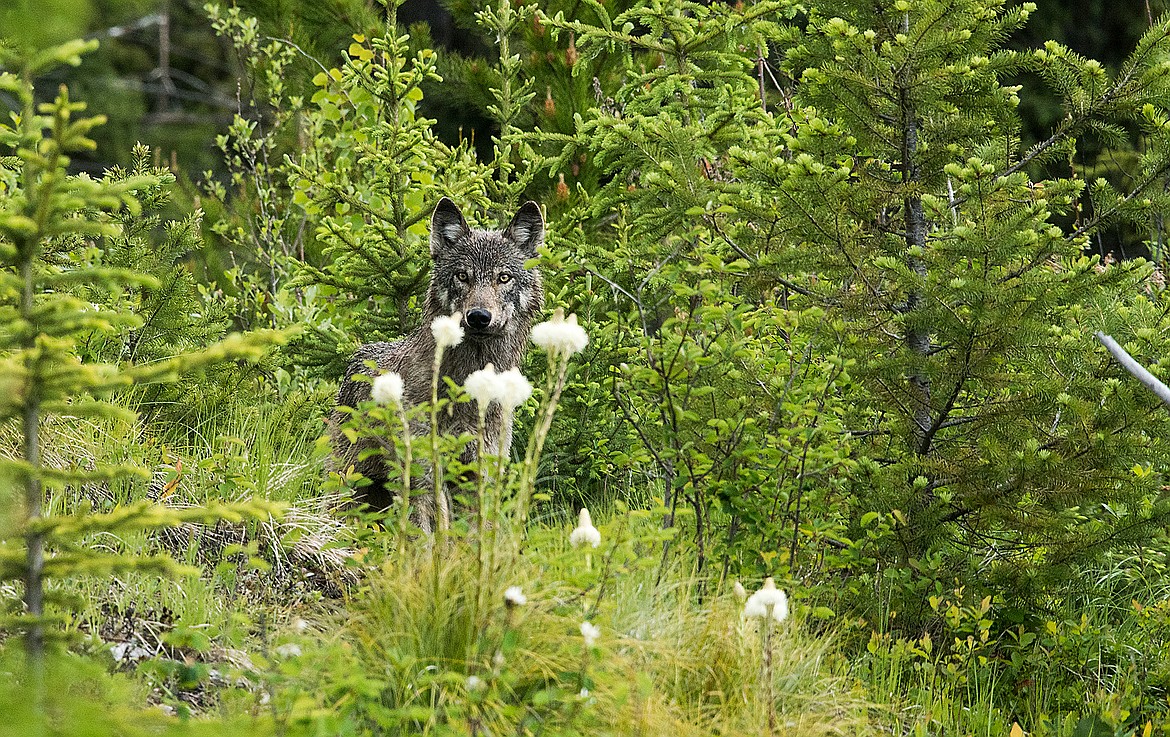FWP says wolf populations stable
BY CHRIS PETERSON
Hungry Horse News
An annual report issued by Montana Fish, Wildlife and Parks says the wolf population in the state appears to have stabilized after a drop from previous highs.
All told, hunters took 148 wolves across the state while trappers took 125 for a total of 273 wolves for the 2021-2022 hunting and trapping seasons.
The total calendar-year 2021 wolf harvest in Montana was 299. In addition, Wildlife Services killed 39 wolves that were found to be attacking or killing livestock.
The state Legislature liberalized hunting seasons and made snares legal in some areas as a method to trap wolves for the first time last season.
Statewide wolf population appears to have peaked in 2011 and has declined slightly since then, appearing to stabilize at around 1,160 wolves, the report notes.
Changes in hunting and trapping included eliminating quotas for specific areas, increasing the number of wolf hunting licenses allowed for individual hunters (10 per hunter), increasing the number of wolves allowed to be legally harvested on one trapping license (10 per trapper), extending the wolf trapping season and implementing a floating start date within grizzly bear occupied areas, and adding new harvest tools to include snaring, night hunting on private property, and baiting.
Despite those changes, the take remained about the same as it has been in the past few years.
The last season was not without its controversies, however.
The state also expunged quotas in areas along the border with Yellowstone National Park.
The hunt last year saw 21 wolves taken just outside of Yellowstone.
In the past, those units had quotas of three wolves total.
At least one pack that resided primarily in Yellowstone was all but wiped out by Montana hunters and trappers, Park officials said.
In Region 3, which runs north from Yellowstone, a total of 83 wolves were taken before the state shut the hunt down.
Wolf advocates claimed Montana was killing the proverbial “golden goose” as a live wolf in Yellowstone brought in thousands of tourist dollars each year, but if they kept killing them, wolf watchers wouldn’t come.
Other sportsmen groups decried the use of snares and the hunting over baits as unsportsmanlike.
The FWP commission is expected to re-examine quotas near Yellowstone in a meeting Aug. 25. The commission will consider a measure that combines wolf management units just outside of Yellowstone and then sets a quota of 10 wolves total hunting and trapping.
Statewide, however, the commission will also consider getting rid of wolf management areas altogether, instead managing them by existing trapping districts.
That could have an impact on Glacier National Park’s wolves, as the state used to have a quota of two wolves along Glacier’s western border in deference to the park.
That quota was lifted entirely last year. Hunters took one wolf in the area, according to FWP.
The number of wolf hunters has actually dropped significantly. In 2014 numbers peaked at 15,570, by 2021, that number was just 8,175.
Of hunters surveyed, only about 4% reported actually seeing a wolf in 2021.
According to the report, wolf density isn’t overly high — in Region One, where wolves are most common, the density ranges from 6.43 to 13.32 wolves per 1,000 square kilometers, or 386 square miles, which amounts to 247,040 acres.

